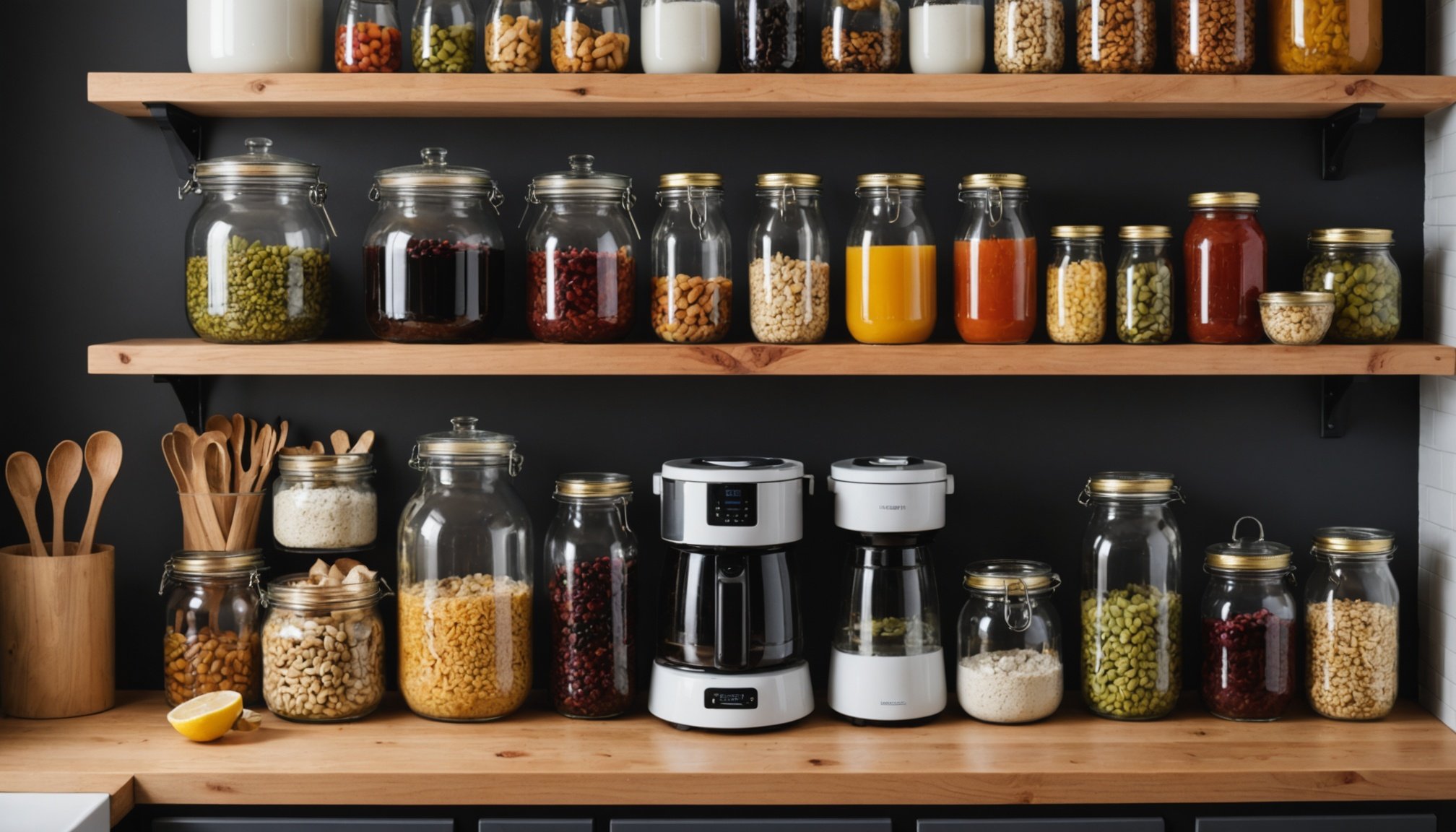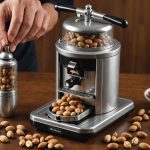Creating a fermentation station enhances your kitchen's functionality while fostering creativity. This dedicated space allows you to explore the exciting world of home fermentation, from tangy sauerkraut to refreshing kombucha. Understanding the essentials—like optimal storage, temperature control, and essential tools—enables you to customize your fermentation journey. This guide will offer practical tips and inspiration to transform your kitchen into a vibrant hub of flavors and health benefits, turning everyday ingredients into delightful masterpieces. Let's embark on this flavorful adventure!
Designing Your Fermentation Station
Crafting the perfect spot for your culinary creations
In parallel : Transforming your kitchen: creative strategies for an allergen-free and healthier home
Key Elements of an Ideal Fermentation Space
Creating a fermentation space in your kitchen involves thoughtful planning. Essential elements include a stable temperature, adequate storage, and easy access to tools. A well-designed fermentation station ensures your DIY projects flourish.
Importance of Layout and Accessibility
An efficient layout is crucial. Arrange your fermentation tools within arm's reach for convenience. Consider a kitchen design that accommodates jars, crocks, and thermometers. Accessibility can streamline the process, making it enjoyable and less cumbersome.
Have you seen this : Crafting an Energy-Efficient Kitchen: Smart Strategies for Electric Appliance Use
Integrating Into Existing Kitchen Aesthetics
Blend your fermentation space seamlessly with your existing kitchen design. Use materials and colors that complement your decor. This integration not only enhances aesthetics but also maintains the kitchen's functionality.
- Temperature Control: Essential for consistent results
- Storage Solutions: Shelves or cabinets for jars and tools
- Lighting: Adequate illumination for monitoring progress
"A well-organized kitchen is the first step to successful fermentation."
By focusing on these aspects, you can create a functional, aesthetically pleasing fermentation station. This encourages you to explore more DIY fermentation projects and enjoy the benefits of homemade creations.
Essential Tools and Materials
Equipping your fermentation station with the right tools is crucial
Must-Have Fermentation Equipment
Setting up a fermentation station requires specific fermentation equipment. The basics include jars and airlocks. Jars are essential for holding your creations, while airlocks allow gases to escape without letting air in. These tools ensure a successful fermentation process by maintaining the right environment.
Recommended Materials
Choosing the right materials enhances your fermentation journey. Opt for glass or ceramic jars, as they are non-reactive and safe for food. Stainless steel is another excellent choice for tools like tongs or funnels. These materials are durable and easy to clean, ensuring long-term use.
Sourcing Sustainable and Eco-Friendly Supplies
It's important to consider the environmental impact of your fermentation supplies. Look for sustainable options, such as recycled glass jars or bamboo utensils. Eco-friendly choices not only reduce waste but also support a healthier planet.
- Jars: Glass, ceramic
- Airlocks: Essential for gas release
- Materials: Stainless steel, bamboo
"Eco-friendly supplies make your kitchen greener."
By investing in quality tools for fermentation, you enhance both the functionality and sustainability of your kitchen. This thoughtful approach encourages continued exploration in the art of fermentation.
Step-by-Step Fermentation Techniques
Exploring the basics of home fermentation
Basic Fermentation Techniques for Beginners
Embarking on the fermentation process can be both exciting and rewarding. Start with simple DIY recipes like sauerkraut or kimchi. These are great for beginners due to their straightforward fermentation methods. Begin by shredding cabbage for sauerkraut or chopping vegetables for kimchi. Add salt to initiate the process, ensuring the right conditions for beneficial bacteria to thrive.
Popular Recipes for Home Fermentation
These DIY recipes are not only delicious but also beneficial for gut health. Sauerkraut requires only cabbage and salt, while kimchi incorporates ingredients like garlic, ginger, and chili flakes. The fermentation process enhances flavors and nutrients, making these dishes both tasty and nutritious.
- Sauerkraut: Cabbage, salt
- Kimchi: Cabbage, garlic, ginger, chili flakes
Common Mistakes to Avoid
Avoiding common pitfalls ensures successful fermentation. One frequent error is using too little salt, which can lead to spoilage. Inadequate temperature control is another issue that can hinder the fermentation methods. Ensure your fermentation process is consistent by monitoring these factors closely.
"The art of fermentation is a journey of flavors and discovery."
By mastering these fermentation methods, you can create delicious, homemade ferments with confidence.
Practical Tips for Optimizing Space
Enhance your kitchen's efficiency with smart design
Utilizing Vertical Space
Incorporating space optimization in your kitchen can transform even the smallest areas into functional fermentation stations. Utilize vertical space by installing shelves or racks. This not only maximizes storage but also keeps your fermentation supplies organized and accessible. Consider wall-mounted solutions to free up counter space, making your kitchen more efficient.
Creative Solutions for Small Kitchens
Small kitchens require innovative approaches to kitchen organization. Use stackable containers and multi-purpose furniture to save space. Foldable tables or movable carts can provide additional workspace when needed. These efficient design strategies allow you to incorporate fermentation into your kitchen without compromising on space.
- Stackable Containers: Save space, easy access
- Wall-mounted Shelves: Utilize vertical space
- Foldable Tables: Flexible workspace options
Maintaining Cleanliness and Organization
Keeping your fermentation area tidy is crucial for successful projects. Implement a regular cleaning schedule to prevent clutter. Use labeled jars and bins to categorize fermentation supplies. This approach not only enhances kitchen organization but also ensures a clean and efficient workspace, encouraging a smooth fermentation process.
"An organized kitchen is the heart of culinary creativity."
Aesthetic Inspiration and Visual Examples
Transform your kitchen with creative fermentation decor
Showcasing Inspiring Fermentation Station Designs
Incorporating kitchen aesthetics into your fermentation station can elevate your culinary space. Many kitchens showcase inspiring designs that integrate fermentation decor seamlessly. Consider using open shelving to display your jars, creating a visually appealing and functional setup.
Ideas for Decorative Elements
Enhancing your fermentation experience with decorative elements can make the process more enjoyable. Use colorful labels or chalkboard paint on jars for a personalized touch. Incorporate natural materials like wood or stone to complement your kitchen's inspirational design. These elements not only add charm but also maintain the station's functionality.
- Colorful Labels: Personalize jars
- Natural Materials: Wood, stone
- Chalkboard Paint: Versatile and stylish
User Testimonials and Success Stories
User testimonials often highlight how a well-designed fermentation station can inspire DIY designs. One enthusiast shared, "Integrating fermentation into my kitchen aesthetics transformed my cooking routine." Another noted, "The inspirational designs I found online helped me create a space that’s both beautiful and practical." These stories demonstrate how thoughtful fermentation decor can spark creativity and enhance your kitchen's appeal.
"A beautifully designed kitchen invites culinary exploration."
By drawing inspiration from these examples, you can create a fermentation station that is both functional and aesthetically pleasing.











